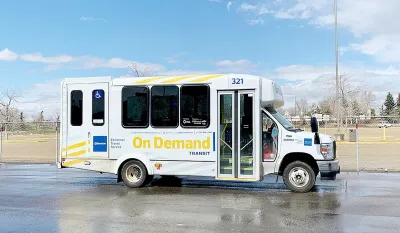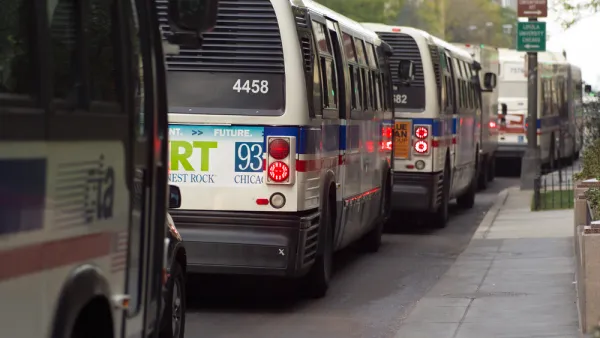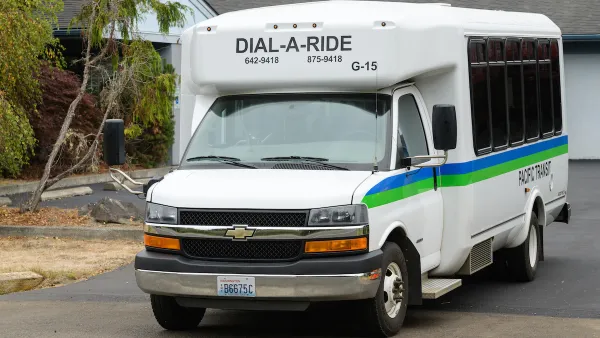A new report warns that microtransit is nothing more than a taxpayer funded Uber with potentially dangerous consequences for existing traditional transit services.

Microtransit pilots and programs are popping up across the country. But, Streetsblog’s Kea Wilson reports, some transportation experts are sounding the alarm that the promise of complementing or replacing traditional fixed-route vehicles with sedans, vans, or shuttles that offer door-to-door service is just “app-taxis by another name.” It’s too good to be true, according to a new report from the Amalgamated Transit Union, which shows that microtransit is already costing local transportation agencies two to three times more per passenger than their worst-performing bus routes on average.
The report outlines additional cracks in microtransit’s veneer:
- Few passengers are actually going anywhere near each other at the same time, meaning the majority of rides are single-person.
- As popularity rises, as it’s bound to for “dirt-cheap, mostly private chauffeur service,” agencies are forced to raise fares or deny requests for rides above their capacity.
- Data from several cities show microtransit is more likely to serve able, white-bodied affluent residents than BIPOC, disabled, and low-income passengers.
- Microtransit operations are often contracted out to private companies, who often don’t provide their part-time gig-worker drivers with basic benefits or guaranteed working hours and in some cases are requested to lease their vehicles from the company and pay for fuel out of their own pockets.
“Despite this, some agencies still choose to do whatever it takes to keep microtransit going — including cannibalizing funds from fixed route transit, accelerating a death spiral that's already been spinning faster since the pandemic,” Wilson writes.
Does that mean cities should avoid microtransit at all costs? The report author says not necessarily, but that it’s best for transit agencies to focus investments on their core service and reserve in-house micro-transit service in the limited situations that are worth a steep subsidy to decrease fares — such as “providing accessible paratransit vans to people with disabilities, piloting service in new neighborhoods that might someday get a dedicated route, and providing those elusive last-mile connections” — while paying drivers a living wage and benefits.
FULL STORY: Microtranist Is Taxpayer Funded Uber, Advocates Warn — And It’s a Threat to Real Transit

Analysis: Cybertruck Fatality Rate Far Exceeds That of Ford Pinto
The Tesla Cybertruck was recalled seven times last year.

National Parks Layoffs Will Cause Communities to Lose Billions
Thousands of essential park workers were laid off this week, just before the busy spring break season.

Retro-silient?: America’s First “Eco-burb,” The Woodlands Turns 50
A master-planned community north of Houston offers lessons on green infrastructure and resilient design, but falls short of its founder’s lofty affordability and walkability goals.

Test News Post 1
This is a summary

Analysis: Cybertruck Fatality Rate Far Exceeds That of Ford Pinto
The Tesla Cybertruck was recalled seven times last year.

Test News Headline 46
Test for the image on the front page.
Urban Design for Planners 1: Software Tools
This six-course series explores essential urban design concepts using open source software and equips planners with the tools they need to participate fully in the urban design process.
Planning for Universal Design
Learn the tools for implementing Universal Design in planning regulations.
EMC Planning Group, Inc.
Planetizen
Planetizen
Mpact (formerly Rail~Volution)
Great Falls Development Authority, Inc.
HUDs Office of Policy Development and Research
NYU Wagner Graduate School of Public Service




























